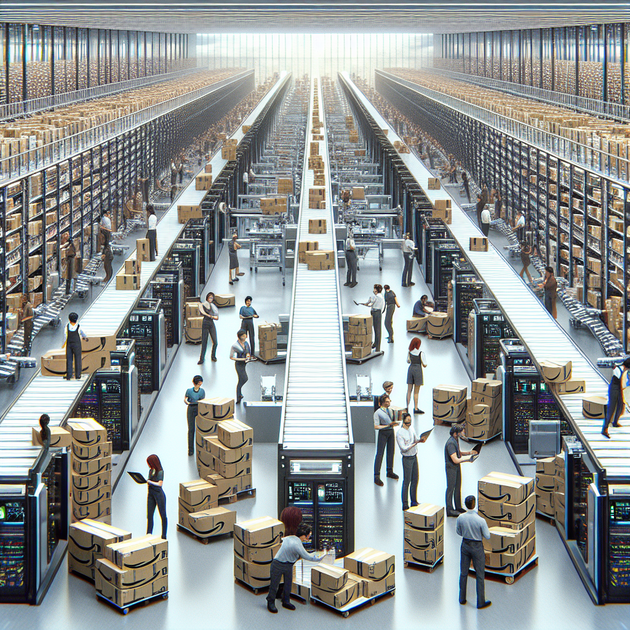What would shopping look like if nearly every package you ordered was picked, packed, and shipped by a robot instead of a person? According to leaked documents reported by multiple sources, Amazon robots could soon replace up to 600,000 US warehouse workers—potentially shaving 30 cents off every item you buy by 2027.
Let’s unpack what this means for workers, shoppers, and the future of retail.
What’s Behind Amazon’s Push for More Robots?
Amazon’s warehouses already use thousands of robots for tasks like moving shelves or sorting packages. But new information suggests the company is planning to ramp up automation in a big way. By replacing hundreds of thousands of human workers with advanced robotics and AI systems, they hope to boost efficiency and cut costs even further.
Why now? The short answer is competition and cost. Labor is a huge expense for retailers. The more tasks robots can handle—without breaks or overtime—the more Amazon can save. Plus, with rising wages and ongoing labor shortages in some areas, automation looks like an increasingly attractive option.
According to reporting by Business Insider, this move could allow Amazon to reduce the average cost of every item sold by about 30 cents by 2027—a massive saving at the scale Amazon operates.
How Could This Affect Warehouse Jobs?
The scale of the proposed automation is staggering. If implemented as described, up to 600,000 warehouse jobs in the US alone could be on the line. These are positions that support families and local economies across the country.
Here’s a quick look at how this shift could play out for workers:
- Job losses: Many roles could disappear as robots take on packing, sorting, and shipping tasks.
- New opportunities: Some workers may shift to maintaining and supervising robots, or move into tech-focused roles.
- Reskilling: Employees might need new training to stay relevant as the nature of warehouse work changes.
- Regional impact: Areas with large Amazon facilities could feel the economic effects most sharply.
For those interested in the bigger picture of automation in the workforce, the Brookings Institution provides a solid overview of how machines are changing jobs across industries.
Why Would This Save You Money?
Amazon’s hope is that by replacing human workers with robots, they can pass on some of the savings to shoppers. Thirty cents per item might not sound like much, but when you consider the billions of products sold each year, it adds up.
Lower costs could make shopping even more affordable for customers. But it also raises questions about what we value in our buying experience—speed and price, or the jobs that make it all possible? It’s a tricky balance, and one that every major retailer will likely face in the coming years.
The Human Side: A Warehouse Worker’s Perspective
A friend once told me about his first day working at a massive fulfillment center just outside Dallas. The space was so vast he used a scooter to get from one end to the other. He’d heard rumors about robots coming in—machines that could zip around faster than any human. At breaks, conversation often turned to what it would mean if the robots took over.
He joked about working “with” robots instead of “for” managers. But behind the humor was real anxiety. Would there be a place for him in a fully automated warehouse? Or would he have to start over somewhere new? Stories like his are increasingly common as technology changes the face of work—not just at Amazon, but everywhere.
What Comes Next for Amazon and Retail?
Amazon isn’t alone in betting big on automation. Companies everywhere are exploring how robotics and AI can make their operations leaner and more competitive. What’s happening at Amazon could soon become the norm across the retail world.
As this shift accelerates, it’s worth thinking about:
- How can companies support workers through transitions?
- What new skills will be most valuable in the coming decade?
- How will shoppers feel about a fully automated supply chain?
For more on how automation is shaping the future of work, check out this New York Times article that breaks down the latest trends.
Where Do You Stand?
Amazon’s plan to replace 600,000 US workers with robots isn’t just a story about technology—it’s about people, businesses, and the future of shopping. As automation continues its march forward, everyone from warehouse workers to everyday shoppers will feel the impact.
Would you be more likely to shop at a retailer that relies mostly on robots if it means lower prices? Or do you think the human touch is worth paying a bit more for? Let’s keep the conversation going—where do you stand on the rise of robots in retail?

Leave a Reply